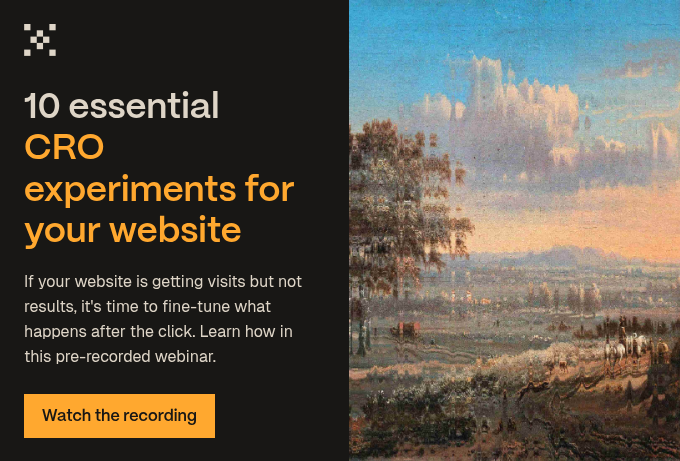Find out how to increase your organic traffic with these 19 SEO tips. Discover how to optimise your website content for the reader and for search.
The challenge for any business is to ensure that when people search online for a product or service like yours, they find you and not a competitor.
But it’s not about implementing SEO tricks, hacks or fads, or costly pay-per-click advertising. There’s plenty you can do to increase organic traffic at no cost (except your time). But let’s start at the top with a quick definition.
What is organic traffic?
Organic traffic refers to the people who find and visit your site through a search engine, such as Google. Usually, they are drawn to a page on your website that answers a search query or matches a keyword or phrase that they have searched for. The process of making content more likely to be found on search is called search engine optimisation, or SEO.
Here is a simple SEO process you can take away and try yourself:

And below we go into more detail with 23 top SEO tips to help you boost your organic traffic in the very near future:
1. Optimise for your readers, not search engines
Before you start writing for your readers, you need to know and understand who they are. So, first and foremost, create your buyer personas so you know to whom you’re addressing your content. By creating quality educational content that resonates with your ideal buyers, you’ll naturally improve your SEO. This means tapping into the real issues of your personas and the keywords they use in search queries.
Optimising for search engines alone is useless; all you’ll have is keyword-riddled nonsense. Read this to learn how to balance the needs of SEO with your thought leadership content strategy.
2. Blog regularly
Blogging is perhaps the most effective way to increase your organic site traffic. Blog posts enable you to go into more depth than your website allows and, in turn, create a large catalogue of helpful, persona-optimised content centred on your market niche. However, poorly-written, spammy or cheap content can do more harm than good. **Avoid it.**
3. Focus on building relationships
The blogosphere has evolved, especially in a b2b context. Forget old-school blog commenting. Instead, focus on building genuine relationships with others in your industry. Guest post on reputable websites, collaborate with influencers and create high-quality content that naturally attracts backlinks. Add value when and wherever you find an opportunity.
4. Use long-tail keywords
Don’t just go with the most popular keywords in your market. Use keywords that are more specific to your product or service. In time, Google and other search engines will identify your website or blog as a destination for information about that particular subject, which in turn will boost your content in search rankings and help your ideal customers find you. This is how you become a thought leader on that topic.
Remember: Ranking on Google is about owning a sphere of influence for a niche topic. This blog post, for example, is targeted at those who want specific learnings on increasing organic traffic. We're not targeting every SEO-related keyword.
5. Get your meta down
While all on-page SEO factors are important to get right, meta descriptions and metadata tell Google exactly what you're talking about. The meta title, URL and description are the three key ingredients for an optimised web page or blog post. It’s simple but effective.
We use a plethora of tools, including Yoast SEO plugin for WordPress, HubSpot's SEO tools and Ahrefs to help us optimise our pages. But it’s not enough to just 'install a plugin' — you have to work on each page in turn.
6. Consistently create quality content
Try to write and publish as often as possible, but not at the cost of quality! The more quality content – including thought leadership articles and blog posts – you have on your website or blog, the more opportunities you create for organic traffic to come your way.
7. Use internal links
Once you’ve built up a decent back catalogue of content, you can link to it in new blogs and throughout your website, guiding visitors to more relevant content. This can keep visitors on your website for longer, which helps boost your search rankings.
HubSpot calls this process topic clustering. We thoroughly recommend you watch this short video about topic clustering here.
But remember not to overuse internal links. Too many and it starts to look like spam.
8. Encourage high-quality backlinks
Google prioritises sites that have a lot of incoming links, especially from other trustworthy sites.
The more quality incoming links you have, the higher your site will rank because, quite simply, the more authoritative it becomes in the eyes of search engines.
But beware: SEO snake oil salesmen try to trick Google with spammy links from low-reputation sites. Some links can actually damage your SEO.
9. Promote your content strategically
Gone are the days of simply sharing your content everywhere in a spray-and-pray approach. Develop a strategic promotion plan. Identify the platforms where your audience is most active—be it LinkedIn, Twitter, or industry-specific forums—and design your content accordingly. Use ads and influencer partnerships to amplify your reach, but keep it relevant and valuable.
10. Use social media wisely
Build a presence on social media networks like LinkedIn, Twitter, Instagram and Facebook. All of these activities help to get your name and website address out on the internet. Focus on one or two platforms and really nail your strategy. Don't just post the same thing four times.
Add social share buttons to your site and emails to make it easy for people to share your content. And, of course, write content worthy of sharing.
11. Use data and metrics to optimise results
Use tools like Google Analytics and Google Search Console to track visitor behaviour. But don’t just look at where they come from—dig deeper into metrics like bounce rate, dwell time, and user engagement. Use this data to fine-tune your content and optimise for what your audience truly wants.
12. Optimise for user experience (UX)
Google now considers user experience a key ranking factor. Ensure your website loads quickly, is mobile-friendly, and offers an easy-to-navigate design. A site that's a joy to use is more likely to keep visitors around—and Google notices that.
13. Improve your Core Web Vitals
Core Web Vitals are a set of metrics that Google uses to evaluate the user experience of a web page. They focus on three key aspects: loading performance, interactivity, and visual stability. Improving these metrics can not only boost user satisfaction but also enhance your search rankings since Google considers Core Web Vitals a ranking factor.
Google is looking for fast, responsive, and stable pages. Read our Core Web Vitals guide to learn how to measure and improve them.
14. Implement Schema Markup
Schema markup helps search engines understand your content better and can lead to rich snippets in search results. This can boost your click-through rates. It’s a small technical tweak with a potentially big impact on organic traffic potential.
15. Focus on E-A-T: Expertise, Authoritativeness, Trustworthiness
Google values content that demonstrates expertise, authority, and trustworthiness. Make sure your content is well-researched and credible. One quick win is to include author bios and credentials to show you know your stuff, like below:

This builds trust with both readers and search engines.
16. Optimise for voice search
Voice search is on the rise, with the global market for speech and voice recognition set to grow from $17 billion in 2023 to around $83 billion by 2032. People use more conversational language when speaking to voice assistants. Including natural language phrases and question-based keywords in your content can help to capture this nascent search field.
17. Create video content
Not all niches and industries lend themselves to breath-taking Hollywood-esque video productions, but they don't have to. Creating SEO video content, such as how-tos, product demos, and explainer videos, not only provides value to your audience but also gives you a chance to appear in video search results.
Google frequently displays video results on the first page for certain queries, especially those starting with "how to" or "what is." By embedding these videos on your website, you can increase the time users spend on your pages, which signals to search engines that your content is valuable.
18. Spend some time on high-quality visuals
Visual content and interactive elements are not just eye candy—they're essential for keeping visitors engaged. Articles with images get 94% more total views than those without. Infographics, charts, and interactive assets like quizzes can make your content more engaging and shareable on social media. They increase dwell time on your pages and can attract backlinks, which will improve your organic reach in time.
19. Focus on user intent
User intent is key for modern SEO. You need to identify the intent behind search queries— whether they are informational, navigational, transactional, or commercial —and design your content to meet the need. For example, provide in-depth guides for informational searches and product pages for transactional queries. Analysing current search results can reveal the type of content Google favours for specific keywords, ensuring your content aligns with both user needs and search engine expectations.
View the webinar recording
We turned this popular blog into a webinar, which was held in September 2020. View the recording (slides here):

This article was originally published in 2019 and has been updated in 2024. In that time 130,000 people have read this advice, thanks to the high position this blog enjoys in Google's ranking. Proof in the pudding and all that!
 Posted by
Sam Beddall
Posted by
Sam Beddall
.jpg?width=1600&height=800&name=europeana-cguOW7oi5TM-unsplash%20(1).jpg)


.jpg?width=400&height=250&name=image%2031%20(1).jpg)


